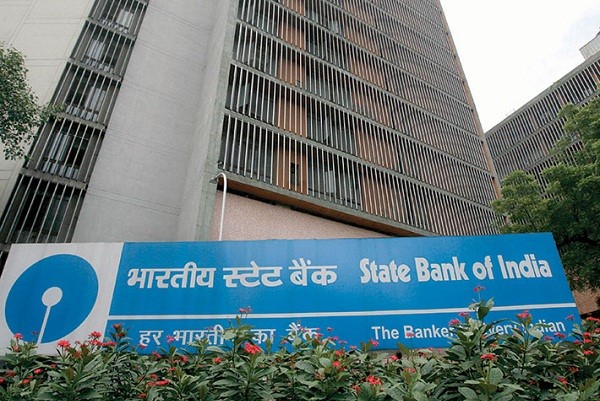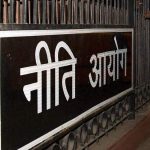Unlike wine, SBI has not matured with age. Sambalpur district registered low CD ratio of 23.23%, where SBI is the lead bank. The State government must initiate action to activate the largest bank to be a part of development of the state.
The Odisha government is going to convene a meeting of the State Level Bankers’ Sub-Committee (SLBSC) meeting on MSME sector during middle of this month to discuss with the defaulting State Heads of public sector banks including State Bank of India. The Sub-Committee of SLBC shall take a review about their poor performance in Odisha while sanctioning and disbursing margin money under Prime Minister Employment Guarantee Programme (PMEGP).
A review meeting held under the chairmanship of MSME additional chief secretary, LN Gupta at the Directorate of Export Promotion & Marketing (DEPM), reveals that while the performance of the Andhra Bank, Bank of India, Canara Bank and UCO Bank during the current financial year was found satisfactory, the performance of SBI, PNB, Union Bank of India, and United Bank of India was not found up to the mark. The tardy progress is contributed by the largest bank SBI having highest branch network in the state.
SBI has failed in expediting sanction and disbursement of margin money assistance to the PMEGP applicants without giving special focus to ST/SC/Women and Physically Handicapped category applicants. Although separate allocation of Rs.946 lakhs to the SC applicants and Rs.1975 lakh for ST applicants is available for margin money assistance, and there is scope for enhancing the central allocation, SBI failed miserably to achieve the current year’s target.
At all India level, this largest bank reported a strong set of earnings for the fourth quarter of the financial year 2016-17. The bank saw its profits more than double from the comparable quarter in 2016, when it was in the midst of a bad loan clean-up mandated by the Reserve Bank of India. That clean-up seems to have peaked with SBI reporting a decline in both its gross and net non-performing assets (NPA) ratio in the fourth quarter. As on 31.3.2017, the NPA position of this bank was limited to only 14.72%, while the average NPA was reported to be at 14.23% in Odisha.
The state witnessed a decrease in MSME lending programme by the banks. The advances to MSME witnessed decrease from Rs. 28495.25 Crore as at March 2016 to Rs.27982.21 Crore as at March 2017, thus registering decrease of Rs. 513.04Crore in absolute terms and 18.06 in percentage terms on year to year basis. Under education loan, a decrease of Rs. 95.90 crore in balance outstanding as on 31.03.2017 over 31.03.2016 represents negative annual growth of 4.17%.
Western Odisha, particularly Sambalpur district registered low CD ratio of 23.23%. Although MCL deposit of Rs14,628 Crore is included in the low interest bearing CASA deposits, advances are discouraging. If this amount is excluded, the CD Ratio will be 68.25%. SBI is certainly responsible for the neglect.
It is astonishing that 12 districts, out of 30 districts of Odisha, have registered CD ratio below 40%. They are Angul, Nuapada, Sambalpur, Deogarh, Gajapati, Ganjam, Jagatsinghpur, Kendrapara, Keonjhar, Puri, Kandhamal and Mayurbhanj. CD ratio of the State as on 31.03.2017 computed on advance sanctioned and utilized in the state was 50.93 %, much below the minimum stipulated level of 60%.
Leaving apart CD Ratio, the performance of SBI in Odisha is discouraging. The Annual Credit Plan, which was prepared by the bank itself for the year 2016-17, was not achieved in Agriculture and other Priority sectors. The bank achieved only 54.29% under Crop Loan and 11.82% of Agriculture Tem Loan target. While our Prime Minister is talking of Stand-Up India, this blue eyed bank has extended support to only 170 entrepreneurs against the target of 1504!!
Interestingly, the performance of this great bank in supporting poultry sector in Odisha was limited to only 26 units amounting Rs.7.42 crores during last fiscal. Can Odisha think of self reliance in egg production, when a bank like SBI behaves so cool? We shall be discussing a live story in the next part to explain how SBI is harassing the entrepreneurs!
Not only poultry, but also schemes like issuance of Weaver’s Credit Card, and Swarojagar Credit Cards have faced almost similar fate. This great bank extended financial support to only 28 and 297 persons respectively during 12 months of the whole year. Not a single person was issued with an Artisan Credit Card, which proves that SBI failed to identify artisans in the state, the other name of which is Utkal and Kalinga.
Reserve Bank of India feels that loans to micro, small and medium enterprises (MSMEs) should not be seen as a matter of government compliance or charity but as a means to prop up the sluggish bank credit growth. Given the problems faced with loans provided to the large industrial sector, the MSME segment offers a potential business area. India is estimated to have about 48 million MSMEs, employing about 11 crore people and contributing nearly 45% of the manufacturing output and about 40% of exports. This sector is one of the most important vehicles for inclusive growth, job creation and poverty alleviation. Despite a number of initiatives taken by the government on the supply side, the fact remains that a large set of MSME units is outside the formal banking sector. This means there is a lack of communication and there is a gap where existing demand and supply are unable to meet in a meaningful way.
According to global estimates, barely 30% of small businesses survive beyond 10 years of formation. About 80% of those that don’t survive fail due to lack of credit. The SME sector largely is in the formal financial sector but the formal sector is meeting their requirement only partially, that’s why they have to fall back on the informal sector.
Most banking activities in India worked on mutual trust, sans securities, the bedrock of British banking. Kautilya’s ‘Arthashastra’ (400 BC), a Sanskrit treatise on statecraft and economic policy, contained references to creditors, lenders, and lending rates; it even laid down norms for banks going into liquidation—something which we now have in the form of the Insolvency and Bankruptcy Code. A large segment of the population is still financially excluded. Following recent government efforts, millions of Indians have been able to open bank accounts, but their access to loans, insurance and mutual fund products is still very limited.
Despite such deep roots and rich history, only the SBI is among the top 50 banks globally in terms of assets. This, too, happened recently after associate banks of State Bank of India (SBI), the nation’s largest lender, merged with the parent. This bank is still not forthcoming to lend to the poor because of high transaction costs and credit costs. In the absence of intense competition, financial repression still continues despite expansion of the branch network and use of modern technology. Unlike some developed markets, the financial sector in India has not led the real sector; it followed it. Unlike wine, SBI has not matured with age.
We will have a new banking landscape but the question is: Will the financial repression end? Will the banks including SBI care for their customers and financial inclusion? Without that, inclusive growth will remain a chimera






































